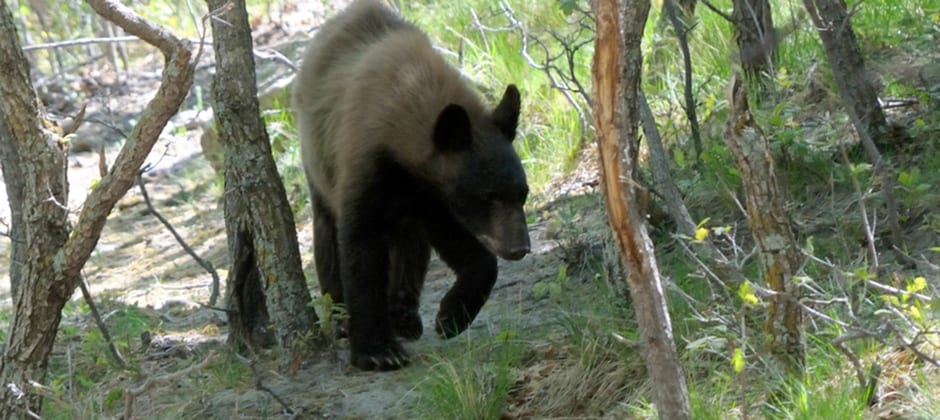Share this article
WSB: Two thumbs up for Colorado two-strike bear policy
Since 1985, Colorado wildlife officers have had a two-strike policy in dealing with black bears.
One call about a bear in the trash, the car trunk or the kitchen, and wildlife officers capture it, mark it and relocate it to the wild, where it should be able to find food without pillaging from people.
If the same bear is caught a second time, it’s euthanized.
In that time, nobody had looked at how well the system was working. How many of the bears that got a first strike came back and got a second? So a team of researchers from Colorado Parks and Wildlife examined 30 years’ of data to find out.
“As far as I know, this is the first time anybody’s looked at it,” said Colorado Parks and Wildlife mammal researcher Mat Alldredge. “It’s certainly something our biologists were wondering about and had asked about. So we decided we would take a look and see if we could figure anything out.”
The policy “has been an effective management tool,” the researchers concluded. Out of over 1,000 black bears (Ursus americanus) that got a first strike between 1987 and 2016, only 25% got a second strike. Hunters ended up harvesting 17% of them. Another 53% were never heard from again.
“How do you interpret that? I think that depends on the agency’s management objective,” said Alldredge, a TWS member and co-author on the study published in the Wildlife Society Bulletin. “For a state like Colorado with a lot of bear habitat, the take-home may be, it’s working reasonably well.”
The researchers also delved into which bears were most likely to be repeat offenders. Subadult male bears were the quickest to get a second strike. “The rowdy teenagers, as they’re always called,” Alldredge said. “I see that maybe the males are a little bolder, and subadults are trying to figure out where their home range is.”
But it was adult females who were the most likely to get a second strike, even though the time between their strikes — an average of 496 days — was the longest.
“It’s the adult female that’s more nutritionally stressed out due to the cost of reproduction,” Alldredge said. “It seems reasonable that they’re going to seek out abundant food sources.”
The first strike for all bears usually came in years when acorns and other mast the bears eat were in short supply.
Those statistics suggest ways that the policy could be adapted to meet different goals, researchers suggested. Other states with different priorities could shape the policy to meet their objectives, Alldredge said. If the goal is to reduce bear numbers, managers could give subadult males just one strike. If wildlife managers want to increase black bear populations, they could give adults one more shot in bad years.
“I’m not going to make suggestions that Colorado change its policy, but certainly in some states, a three-strike policy may be warranted in areas with low bear densities where problems may be few and far between,” he said. “Euthanizing a bear is really falling out of public acceptance. Our managers don’t like it either. It’s a bad day when you have to put a bear down when it got into the trash.”
Every nuisance bear situation gives managers an opportunity to educate the public about the importance of removing attractants, researchers concluded. “I hope when people hear that a bear’s going to be put down because it’s repeatedly getting into the trash that people put out, I hope people will say, ‘That’s awful. I can do something about it,’” Alldredge said.
This article features research that was published in a TWS peer-reviewed journal. Individual online access to all TWS journal articles is a benefit of membership. Join TWS now to read the latest in wildlife research.
Header Image: The first time a problem is reported with a black bear in Colorado, it is captured, marked and relocated in hopes that it will not return. ©Rob Lucas








